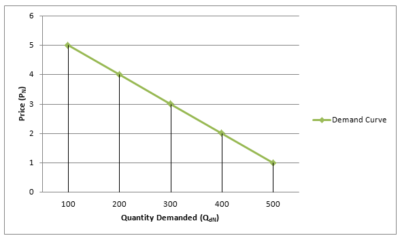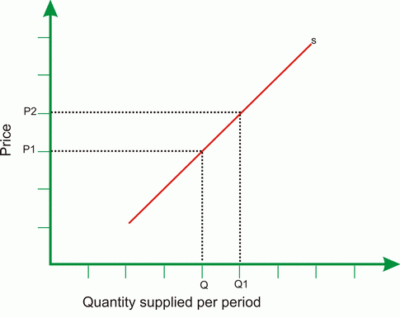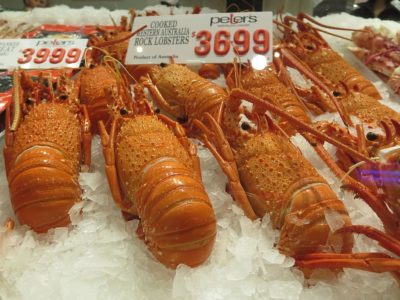Economics: The relationship between demand and supply of goods and services is considered as the backbone of economics, mainly because it is used to determine the equilibrium price. For the purpose of explaining the principle of market equilibrium leading to the determination of equilibrium price and equilibrium quantity, the discussion would use an actual market phenomenon of reduction in Australian lobster prices as a result of COVID-19, during the first quarter of 2020.
The relationship between demand and supply of goods and services is considered as the backbone of economics, mainly because it is used to determine the equilibrium price.
For the purpose of explaining the principle of market equilibrium leading to the determination of equilibrium price and equilibrium quantity, the discussion would use an actual market phenomenon of reduction in Australian lobster prices as a result of COVID-19, during the first quarter of 2020.
Equilibrium Price and Australian Lobster Industry
Economics of equilibrium price is beautiful, perhaps because good quality lobsters are being sold in Australian market for as low as $33 a piece instead of its normal price of $48, or $65-95 a kilo.
Australian fish and lobster industry is among the industries adversely affected by the COVID-19 pandemic.
The main issue behind the immense decline in price of lobsters is the decline in demand from China, which is one of its greatest buyer.
This is apparent from the fact that export of lobsters to China make up around half ($660 million) of total seafood export ($1.4 billion) to China.
The decline in export of lobsters has led to an increase in supply of lobster in Australian market, which is greater than its demand.
January to April is considered as the busiest season for Australian lobster industry due to immense demand from China.
But since the outbreak of COVID-19 in China as early as in January 2020, such demand has declined immensely.
Economics behind the Decline in Lobster Prices
Law of Demand
Other things remaining the same (Ceteris Paribus), the demand for a commodity falls when its price increases, and the demand for such commodity increases when its price falls.
This depicts that demand of goods or services is inversely proportional to price and any variation in one variable will cause the other variable to move in opposite direction.
Accordingly the demand curve would be downward sloping towards the right on a quantity (x-axis) – price (y-axis) plane.
Law of Supply
Other things remaining the same (Ceteris Paribus), the supply for a commodity falls when its price declines, and the supply for such commodity increases when its price increases. 
This depicts that demand of goods or services is directly proportional to price and any variation in one variable will cause the other variable to move in similar direction.
Accordingly the supply curve would be upward sloping towards the right on a quantity (x-axis) – price (y-axis) plane.
Equilibrium Point
On the basis of prevailing values of different variables, the point at which the demand and supply curve intersect is called the equilibrium point, and the corresponding value of x-axis is the equilibrium quantity and the value of y-axis, equilibrium price.
This point represents the willingness of buyers to purchase and sellers to sell.
The graph below is a depiction of laws of demand and supply mentioned above.
- Graph ‘D1’ and ‘D2’ represents the demand curves, whereas ‘S’ represents the supply curve.
- The intersection point of ‘D1’ and ‘S’ can be denoted as ‘E1’ at quantity ‘Q1 = 1 units’ and ‘P1 = $48’.
- The intersection point of ‘D2’ and ‘S’ can be denoted as ‘E2’ at quantity ‘Q2 = 1 units’ and ‘P2 = $33’.
- In the above graph it is assumed that the supply of lobster has remained constant, represented by ‘S’,
whereas the demand has fallen from ‘D1’ to ‘D2’, due to decline in demand for lobsters by China.
Reduction in Equilibrium Price of Lobsters-Explained
From the graph it can be deduced that in accordance with the laws of demand and supply, as the demand curve has shifted from ‘D1’ to ‘D2’, the equilibrium price has fallen from ‘P1’ to ‘P2’.
It is to be noted that the supply has been kept constant because lobsters are classified as consumables, for which supply cannot be changed in the short run.
Furthermore due to the fact that start of fiscal year is considered as the busiest time for lobster business, the fisherman and sellers had fished in great proportion in anticipation of high foreign demand, and ability of GFC to hold 220 tons of lobster in refrigerated seawater storage tanks for 4 to 6 weeks.
Possible Outcomes
Lobster fishing is classified as one of the highest value economic activity in Australia, but the decline in demand has added to the hardships of fishermen who seem to find no alternative means of earning their bread and butter.
In order to tackle this issue the following outcomes are predicted.
Abandon Ship
Fisherman might abandon lobster industry and look for new horizons to meet their need for bread and butter, at least for the period, the global economy is under the adverse influence of COVID-19.
This decision might prove harmful for the industry as a whole, as the industry might not recover to its original capacity once the epidemic is over. In such scenario the government can intervene to fulfill the basic necessities of such farmers for as long as the industry revives.
All Hands on Deck
Fisherman can continue to fish for lobsters in anticipation that they are capable of finding new potential markets, whether internally within Australia, or internationally in markets such as USA and Japan.
In this respect the Government might provide subsidies to fisherman over and above the prevailing market price of lobsters in Australia, to minimize their losses.


COMMENTS